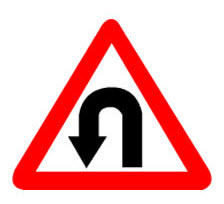Like its name suggests, the Know Sure Thing Oscillator can reveal accurate information. With regard to swings in stocks’ cycle, it can determine both short-term and long-term trends. In the foreign exchange market, although most experienced traders are aware that there is no quick and easy route to success, they will agree that it’s a treat to have an indicator that is known to give you go signals in terms of entering or exiting a market.
About the Know Sure Thing Oscillator
The Know Sure Thing or KST Oscillator is an advanced momentum indicator developed by a respected investment advisor, Martin J. Pring. As a Rate of Change indicator, it shows the difference between the closing price two days ago and the closing price of the current day. Since it revolves around the concept that the interaction of different time cycles can determine price trends, it is useful in identifying major market cycles.
The Secret Formula Is All You Need
The KST Oscillator is influenced by closing prices, as well as daily Rates of Change. It follows the idea that Rates of Change have to be calculated, smoothed, and be multiplied by weights. Once these integral figures have been identified, they are added together to obtain the main result.
Step-by-step instructions:
- Calculate four different figures for Rates of Change.
- Rate of Change 1 = [closing price / closing price (day 1) – 1] X 100
- Rate of Change 2 = [closing price / closing price (day 2) – 1] X 100
- Rate of Change 3 = [closing price / closing price (day 3) – 1] X 100
- Rate of Change 4 = [closing price / closing price (day 4) – 1] X 100
- Set parameters.
MOV = moving average
AVG (1-4) = moving averages of days one to four
W (1-4) = weight of stocks during days one to four
- Identify the KST using the main formula.
KST = MOV {(Rate of Change 1 X AVG 1) X [W 1 + MOV (Rate of Change 2 + AVG 2)] X [W 2 + MOV (Rate of Change 3 + AVG 3)] X [W 3 + MOV (Rate of Change 4 + AVG 4)] X W 4}
Getting Familiar with Entry & Exit Rules
When the KST Oscillator yields a figure that crosses below the 9-day exponential moving average, you can expect to enter at the next day or once a closing price for that day has already been determined. On the other hand, you are given a cue to exit the market once the indicator surmounts its 9-day exponential moving average.
Information gathered from http://en.wikipedia.org/wiki/KST_oscillator , http://www.admiralmarkets.ae/education/knowledge-base/ and http://www.investopedia.com/terms/k/know-sure-thing-kst.asp


